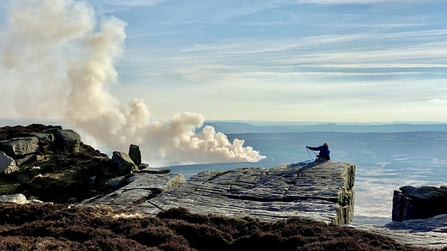It is a common practice for gamekeepers of grouse moors across Derbyshire’s Dark Peak to set light to the heather on the moorlands. Smoke billowing high, releasing carbon we’re working so hard to store and destroying vital habitats. It’s not just a problem for Derbyshire, sadly this practice is carried out across Northern England and Scotland each year.
The main aim of burning is to encourage the development of new green heather shoots to feed red grouse which are then shot later in the year during the grouse shooting season. The moorland burning season extends from October 1 to 15 April.

